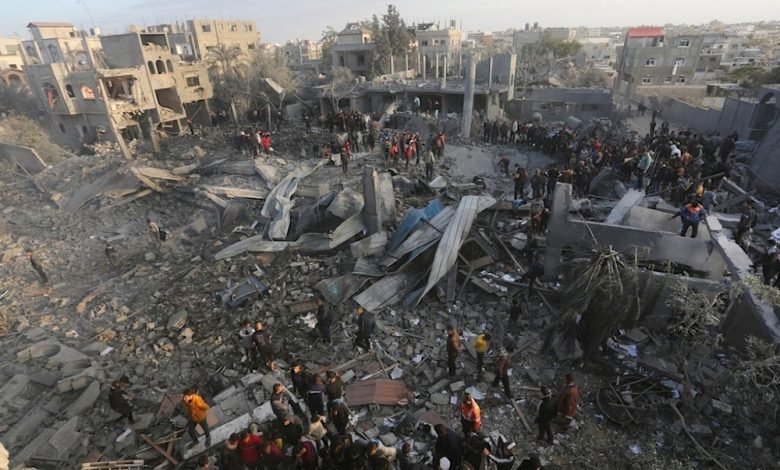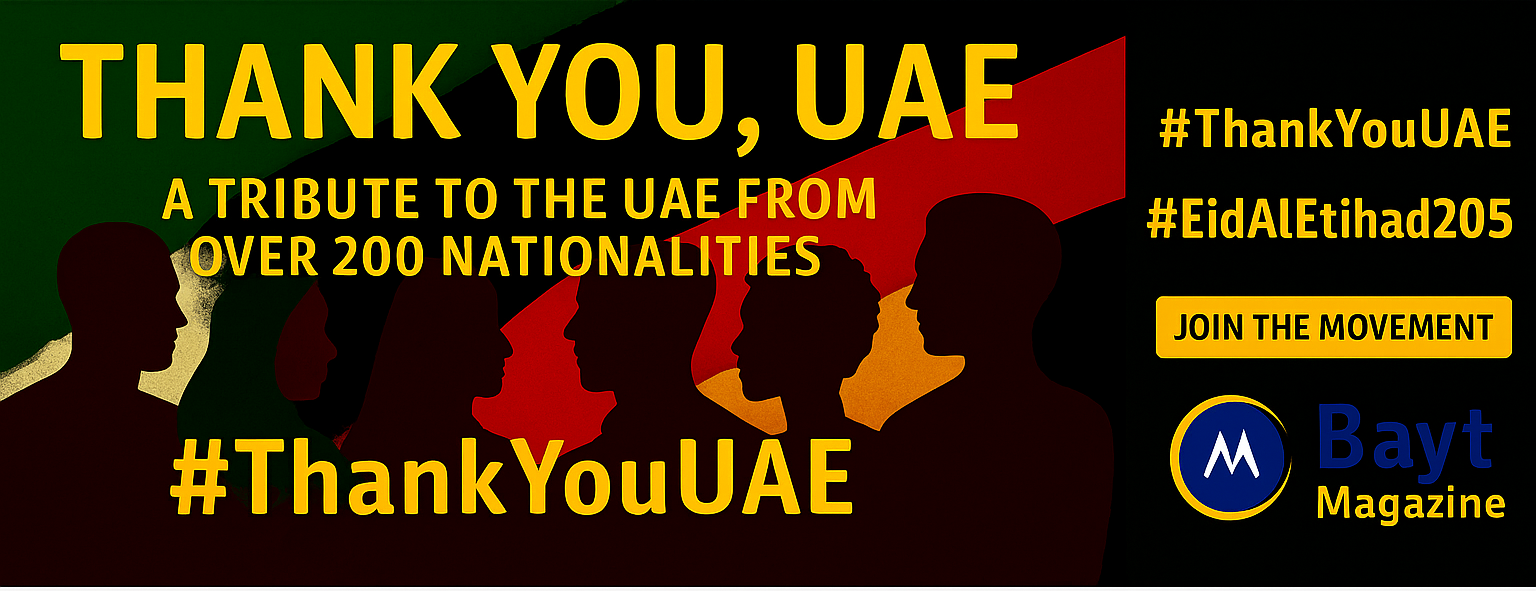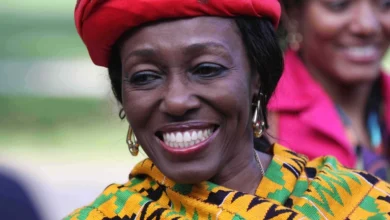
Occupy, Exploit, Eliminate: The UN Report That Shakes the World Conscience
Israeli forces have killed nearly 57,000 Palestinians in the past 22 months. This devastating toll marks a change from an economy of occupation to an economy of genocide. The Tel Aviv Stock Exchange has grown by at least 200 percent during this period and gained more than $220 billion in market value.
The conflict has revolutionized Israel’s economy by a lot. Their military budget jumped from 4.2 percent to 8.3 percent of GDP, pushing the public budget into a 6.8 percent deficit. Arms companies have made near-record profits by supplying Israel with innovative technology. These weapons helped release 85,000 tons of explosives – six times the power of Hiroshima – to destroy Gaza.
A recent UN report shows about 1,000 corporate entities have profited from this conflict. Israel has become the world’s eighth largest arms exporter between 2020 and 2024. This piece gets into the massive corporate machinery that keeps Israel’s settler-colonial project running. The project has forced out more Palestinians from the West Bank than any time since 1967. Corporate accountability measures must address these human rights violations.
From Settler-Colonialism to Genocide: A Historical Overview
Israel’s creation in 1948 started a systematic process that displaced Palestinians through different economic phases. This pattern shows how economic exploitation became fundamental to the settler-colonial project from day one.
The Nakba and the Logic of Displacement
The Arabic word “Nakba,” which means “catastrophe,” describes Palestinians’ mass displacement when Israel became a state during 1947-1949. Israeli forces pushed out at least 750,000 Palestinians from a 1.9 million population beyond their new state’s borders. This number represented about 80% of Palestinian Arabs living in what became Israel.
Zionist forces took control of more than 78% of historic Palestine. They destroyed about 530 villages and cities while killing about 15,000 Palestinians through more than 70 massacres. Palestinians lost their homes, businesses, farmlands, and other property. The financial impact was massive – their losses amount to roughly $200 billion in today’s US dollars.
The United Nations General Assembly demanded refugee return, property restoration, and payment through resolution 194 in December 1948. Palestinians still wait for these rights 77 years later. More than 5 million Palestinian refugees live scattered across the Middle East. Their displacement created both humanitarian and economic crises, turning Palestinians into a “refugee nation” with a “wandering identity”.
Post-1967 Expansion and Economic Control
Israel’s occupation of the remaining Palestinian territories in 1967 – the West Bank, East Jerusalem, and Gaza – brought new economic domination. Israeli authorities created an “economy of occupation” through policies that controlled Palestinian resources while limiting growth.
Israeli authorities took complete control of Palestine’s economy right after the 1967 occupation. They created policies of “integrationism” that weakened Palestinian economic stability while benefiting Israel. These policies restricted Palestinian production, monopolized resources, and forced Palestinians to buy Israeli goods.
The occupation devastated Palestine’s economy. A 2016 United Nations report shows Palestine’s economy could be twice its size without the occupation. The Palestinian population grew by 3.6% each year from 1995 to 2014, but real GDP per person grew by only 1%. Unemployment reached 27% in occupied Palestinian areas by 2016, with Gaza’s rate much higher at 42%.
Israeli settlements grew rapidly, making economic problems worse. The number of settlers doubled after the 1993-1995 Oslo Accords, reaching between 600,000 and 750,000. These settlements took Palestinian water and farmland for Israeli use. The World Bank found that Palestinians can irrigate only 35% of their farmable land, which costs them 110,000 jobs and 10% of GDP.
The Shift After October 2023
Israel’s military response to Hamas’s October 7, 2023 attacks changed the occupation economy into what UN experts now call an “economy of genocide”. This period brought unprecedented destruction to Palestinian economic life.
Gaza’s farming capacity nearly disappeared by early 2024, with 80% to 96% of agricultural assets destroyed. About 82% of businesses lay in ruins. Gaza’s economy crashed – its GDP fell by 81% in late 2023, shrinking the year’s total by 22%.
UN Special Rapporteur Francesca Albanese sees this as “part of a long-term intentional, systematic and State-organized forced displacement, intended to erase the Palestinians from their own land”. The violence since October 7, 2023 has killed, injured, or left missing at least 150,000 Palestinians – mostly women and children.
Gaza’s economy shrank to less than one-sixth of its 2022 size by mid-2024. The West Bank’s economy also suffered, with GDP falling 19% in late 2023. The Palestinian Authority faces bankruptcy with a $2.5 billion funding gap at 2023’s end.
Israeli Agriculture Minister Avi Dichter confirmed the connection between past displacement and current destruction. He called the Gaza war “the 2023 Gaza Nakba”, revealing the true intent behind Israel’s economic policies toward Palestinians.
The Economy Was Based on Displacement and Control
Israel controls Palestinian territories through a complex system that manipulates resources, markets, and labor. This system has weakened Palestinian economic independence while benefiting Israel’s economy. The occupation created barriers that made Palestinian territories depend on Israel. This dependency laid the groundwork for what later became an economy of genocide.
Captive Markets and Resource Monopolies
Israel’s occupation aimed to make Palestinians economically dependent by creating captive markets and controlling resources. After 1967, Israel put policies in place that limited Palestinian production and forced them to rely on Israeli goods. They achieved this by taking control of vital resources and creating monopolies that benefited Israel.
The way Israel controls water shows this perfectly. Mekorot, Israel’s national water company, now has complete control over Palestinian water. Palestinians must buy their own water at high prices from this company. This means Palestinians pay for resources that should be theirs.
Israel’s grip on resources has crippled Palestinian production capacity. The customs union made things worse by letting Israel control economic exchanges to keep Palestinians dependent. This wasn’t just about economics – it was a tool to suppress resistance and maintain political control.
Trade Restrictions and Labor Exploitation
The 1994 Paris Economic Protocol made the unequal relationship between Palestinian and Israeli economies official. Instead of fair integration, it gave Israel control over key parts of Palestine’s economy:
- Fiscal and monetary policies
- External trade relationships
- Industrial zoning rights
- Overall macroeconomic framework
The permit system became a powerful way to control and exploit workers. By 2019, Israel and its illegal settlements hired over 133,000 Palestinians – about 18.5% of the West Bank’s workforce. These workers faced tough conditions. Only 3.5% had written contracts, while 42.2% worked on verbal agreements, leaving them open to abuse.
Workers lost money too. Israel kept about USAED 559.71 million of Palestinian workers’ sick leave funds. Human rights groups called the permit system “a stark element of oppression and exploitation”.
Population of Palestine 2023: Economic Marginalization
The economy took a severe hit in 2023, especially after October. Gaza’s unemployment jumped to 79% in late 2023, up from 46% in the previous quarter. The entire Occupied Palestinian Territory saw unemployment reach 57% by early 2024.
Military operations destroyed Gaza’s farming sector. Between 80-96% of agricultural assets were damaged or destroyed by early 2024. This included irrigation systems, farms, orchards, and agricultural land – basically wiping out their ability to grow food.
The West Bank suffered too. By January 2024, Israeli measures affected 99% of West Bank businesses, and 97% saw their sales drop. About 90% of Palestinian workers in Israel lost their jobs. This meant losing around AED 79.68 million in wages every day.
These changes pushed more people into poverty. Before October 2023, 31.1% of Palestinians were poor. By mid-2024, this number shot up to 60.7%, with many middle-class families falling below the poverty line. What was already a tough situation turned into a disaster – all because of policies that pushed Palestinian businesses aside and made them rely too much on Israeli economic structures.
Weapons and Surveillance: Tools of Mass Displacement
Military technology and surveillance systems are the life-blood of Israel’s infrastructure of displacement. These technological tools give unprecedented levels of monitoring, targeting, and control over Palestinian populations. This enables the transition from occupation to genocidal practices.
F-35 and Drone Deployment in Gaza
Israel’s F-35 fighter jets play a vital role in its military operations in Gaza. These sophisticated aircraft, known as the most advanced combat planes worldwide, have key components made in the UK and other partner nations. F-35s have directly struck designated “safe zones,” including a July 2024 attack on Al-Mawasi in Khan Younis that killed 90 Palestinians. The jets also launched a March 2025 assault after a declared ceasefire, which killed 436 Palestinians, including 183 children.
F-35 jets do more than just bombing to maintain Israel’s military dominance. These aircraft intercepted Iranian drones carrying firearms meant for Gaza in March 2021. This was the first time F-35 jets shot down drones. The versatile aircraft enforce siege conditions, support ground troops, and maintain the blockade that causes starvation in Gaza.
AI-Powered Targeting and Predictive Policing
Israel’s military operations now rely heavily on artificial intelligence systems to make targeting decisions. Two main AI tools have emerged:
- Lavender: This machine learning system gives Gaza residents numerical scores based on their suspected ties to armed groups. The IDF approved its kill lists “as if it were a human decision” despite a 10% error rate in identifying Hamas affiliations. Soldiers could authorize bombings with minimal checks—they only needed to verify the target was male, which took about “20 seconds”.
- The Gospel: This algorithm turns surveillance data into target lists with four categories: military targets, underground infrastructure, family homes of suspected militants, and “power targets”—civilian structures hit to “create shock” and pressure civilians.
The IDF launched what they called “the world’s first AI war” during an eleven-day offensive on Gaza in 2021. They used autonomous robotic drone swarms to gather surveillance data, identify targets, and streamline wartime logistics. Today, lightweight drones like Golden Eagle use AI to lock onto targets immediately, whatever the lighting conditions.
Surveillance Infrastructure in the West Bank
Israel has built a vast surveillance ecosystem across the West Bank that tracks Palestinians’ movements, communications, and social media activity. The “Blue Wolf” smartphone app runs on a massive database called “Wolf Pack.” This system holds profiles with photos, family histories, educational backgrounds, and security ratings of Palestinians. Israeli soldiers must take photos of Palestinians without permission to grow this database. Each shift requires them to add at least 50 Palestinians to the tracking system.
Facial recognition technology dominates Hebron and East Jerusalem. The “Mabat 2000” system—Hebrew for “gaze”—uses cameras that spot individuals in crowds, even from blurry drone footage. Palestinians at checkpoints get facial scans with a color-coded system telling soldiers whether to let them pass, question them, or detain them.
This constant surveillance takes a deep psychological toll. A Palestinian rights defender said, “The system’s very purpose and essence creates anxiety and fear”. The endless monitoring limits movement, stops political expression, and maintains economic control. This shows how surveillance technology helps systematically displace and control Palestinians.
Tech Giants and the Infrastructure of Genocide
Image Source: ABC News
Major tech corporations now play a key role in Israel’s control and violence against Palestinians. They provide sophisticated tools that aid what UN experts classify as genocide. Unlike traditional military contractors, these tech giants hide behind commercial services while their technologies power deadly operations in Gaza and surveillance systems across occupied territories.
Microsoft, IBM, and Biometric Data Systems
IBM plays a key role in Israel’s detailed surveillance system by managing the Eitan System for the Israeli Population, Immigration and Border Authority (PIBA). This system stores Palestinians’ biometric data and powers Israel’s extensive permit system that limits Palestinian movement. IBM designed and now runs this database which stores and manages personal information on occupied Palestinian and Syrian populations. The system works at major Israeli checkpoints in the West Bank and documents all Palestinian crossings and movements.
Microsoft openly provides cloud and artificial intelligence services to Israel’s Defense Ministry. The company supplies software, professional services, Azure cloud infrastructure, and AI tools including language translation capabilities. After October 7, 2023, Microsoft expanded its work with the Israeli military by giving access to OpenAI’s GPT-4 model during Gaza’s most intense bombardment.
These biometric systems serve as the foundation of Israel’s control mechanisms. Palestinians over age 16 must carry “smart” cards with their photograph, address, fingerprints, and other biometric identifiers just to exercise simple rights like crossing checkpoints for work, medical care, or family reunification.
Google and Amazon’s Project Nimbus
Google and Amazon signed a AED 4.41 billion contract with Israel called Project Nimbus in 2021. This agreement gives the Israeli government and military access to detailed cloud computing infrastructure, artificial intelligence, and data analysis capabilities. Through this contract, these tech giants give Israel “virtually government-wide access to their cloud and AI technologies,” which greatly improves its data processing and surveillance abilities.
Both companies faced pushback from employees who wanted to end the contract through the “No Tech for Apartheid” campaign. The contract has provisions that ensure continued services even during boycott campaigns.
Project Nimbus’s military uses have become clear. Military presentations show the logos of Microsoft Azure, Google Cloud, and Amazon Web Services—which suggests heavy use of these platforms during Gaza operations. Internal documents show that Israel’s Ministry of Defense has its own dedicated “landing zone” into the Project Nimbus infrastructure. Amazon and Google’s services reportedly increased after October 7, 2023.
Palantir’s Battlefield AI Integration
Palantir Technologies, a data-mining company with CIA ties, has increased its support to the Israeli military since the Gaza war began in October 2023. On January 12, 2024—three months into the genocide—Palantir CEO Alex Karp visited an Israeli military headquarters and signed an upgraded agreement with Israel’s Ministry of Defense.
The company’s technology powers automated targeting systems including:
- Lavender: An AI system that scores Gaza residents based on suspected Hamas affiliation
- The Gospel: An algorithm processing surveillance data to generate target lists
- Where’s Daddy?: A targeting system mentioned in UN reports
Palantir’s executives openly acknowledge their technology’s deadly uses. CEO Alex Karp stated, “Our product is used on occasion to kill people,” which understates its actual deployment. Karp claims Palantir’s systems can identify and process targets for elimination in “no more than two or three minutes”.
The war in Gaza continues while these tech giants provide digital infrastructure that enables mass displacement, surveillance, and targeting. They have turned an economy of occupation into one of genocide through algorithmic violence and automated decision-making systems.
Construction and Energy Sectors in Settlement Expansion
Image Source: The Palestinian Information Center
Construction machinery and energy resources are the foundations of Israel’s settlement expansion. These work alongside digital surveillance systems to help retain control over Palestinian territories. The way these sectors are managed creates a system that limits Palestinian development while increasing Israeli dominance.
Heavy Machinery in Demolitions and Road Building
International manufacturers’ construction equipment plays a key role in Israel’s displacement policies. JCB, a British heavy machinery company, faces questions about its bulldozers used to demolish Palestinian homes in the West Bank. The company claims no responsibility for how others use their equipment. However, evidence shows JCB’s sole agent in Israel has contracts with Israel’s Ministry of Defense specifically for bulldozers used in demolitions.
Palestinian families in East Jerusalem face a harsh choice. They must either demolish their own homes or pay huge fees—about AED 367,194 (£75,600)—to let Israeli authorities do it. East Jerusalem now has at least 20,000 outstanding demolition orders.
Israeli authorities spend about 20% of their total road investment (around 3 billion NIS) on infrastructure that serves settlements. These road networks are vital to settlement development. They create physical connections between illegal settlements and Israel proper.
Chevron and BP’s Role in Fueling the Conflict
Major oil corporations supply fuel that powers Israel’s military operations in Gaza. BP owns 30% of the Baku-Tbilisi-Ceyhan Pipeline, which provides about 8% of Israel’s crude oil imports from Azerbaijan. Chevron holds a similar 8% share through its Kazakh oil production.
Investor-owned and private oil companies provide 66% of Israel’s crude oil needs. Chevron stands out as the largest international corporation in Israel’s energy sector. It runs Israel’s biggest active gas fields—Tamar and Leviathan. These operations brought in about AED 5.51 billion in 2023.
Chevron responded to questions about supplying oil to Israel, despite the International Court of Justice ruling on potential genocide. They said they “remain focused on reliably providing the energy the world needs”.
Water and Electricity as Tools of Control
Basic utilities have become powerful tools in Israel’s control system. Israel has limited Palestinian control over their water resources through unfair agreements since taking over the West Bank in 1967. Palestinians have access to substantial rainfall and the Mountain Aquifer. Yet they receive only 13% of available water while Israel takes the remaining 87%.
People in the West Bank typically use just 73 liters of water daily per person. This is nowhere near the 240 liters Israelis use or the 300 liters settlers consume. Some Area C communities use as little as 20 liters per person.
Israel stepped up its settlement infrastructure expansion in 2023 through renewable energy projects. More than ten new “solar farms” in Area C now benefit Israeli settlers. Israel also planned 23 renewable energy projects. They proposed a high-voltage transmission line covering almost the entire north-south stretch of the West Bank. These projects further cement the occupation’s permanence.
Financial Networks Sustaining the Occupation Economy
A complex financial architecture supports Israel’s military operations and enables the shift from occupation to genocide. The financial backing comes from international investors, insurance companies, and specialized funds that provide significant capital to sustain Israel’s expanding control over Palestinian territories.
Israeli Bonds and Global Investment Firms
Development Corporation for Israel, known as Israel Bonds, plays a vital financing role with total worldwide sales that exceed AED 176.25 billion. U.S. states invested AED 1101.58 million during the first four weeks of the 2023 Israel-Hamas war. Buyers purchased a record-breaking AED 3.67 billion by November 2023. These “war bonds” serve as marketing opportunities to support “Israel at War”.
Goldman Sachs leads seven major investment banks by underwriting more than AED 25.70 billion in Israeli sovereign bonds since October 2023. Bank of America, Deutsche Bank, BNP Paribas, Barclays, and JPMorgan Chase follow as additional underwriters.
Major asset managers form another financial support pillar. BlackRock’s position as the second largest institutional investor includes multiple companies supporting Israeli operations: Palantir (8.6%), Microsoft (7.8%), and Amazon (6.6%). Vanguard holds the largest institutional investor positions in Caterpillar (9.8%) and Chevron (8.9%).
Insurance and Risk Underwriting in Conflict Zones
Insurance sector prices have risen sharply due to the conflict. Political violence coverage in Israel costs nowhere near pre-conflict rates. Ships transiting the Red Sea face 60% higher marine insurance premiums. A ship’s seven-day trip to Israel now costs between 0.15% and 0.2% of its value, up from 0.0125%.
Allianz and AXA’s substantial investments in shares and bonds linked to Israel’s occupation create a cycle where their underwriting and investment activities strengthen each other.
Faith-Based and Sovereign Fund Contributions
European financial institutions’ business relationships with firms involved in Israeli settlements have grown from 776 to 822. Notwithstanding that, some funds like Norway’s pension fund KLP have pulled their support. This withdrawal highlights the growing financial scrutiny of Israel’s occupation economy.
Academic Institutions and the Normalization of Violence
Israeli academic institutions have built strong military connections that create an environment normalizing violence against Palestinians. This happens through research, funding, and efforts to silence opposition.
University-Military Research Collaborations
Military units maintain a strong presence on Israeli university campuses. Ben-Gurion University provides its facilities to “technological units, Israeli Air Force units, and the headquarters of the military’s Southern Command” that leads operations in Gaza. Unit 8200 operates from Ben-Gurion University’s Advanced Technologies Park and has created a devastating AI-based program called “Lavender.” The program identified 37,000 Palestinians as potential militants. The Israeli military used this system to determine “that, for every junior Hamas operative that Lavender marked, it was permissible to kill up to 15 or 20 civilians”.
Horizon Europe and Israeli Tech Partnerships
Horizon Europe, the EU’s science and innovation funding program, has provided Israel approximately €3 billion. The partnership dates back to 1996 when Israel first joined EU research programs. Rules require projects to serve exclusively civilian purposes, yet enforcement remains weak. Israeli start-up Xtend serves as a prime example. The company received €50,000 from EU funding in 2020 to develop drones. These drones now help the Israeli army in Gaza operations and reportedly assisted in tracking Hamas leader Yahya Sinwar before his death.
Campus Crackdowns and Financial Interests
Authorities have arrested over 2,000 students worldwide who demanded divestment from companies with Israeli ties. Harvard University placed its Palestine Solidarity Committee on probation after protests. Students describe disciplinary processes filled with “fear tactics”. Low-income students suffer the most severe impact as suspensions cut off their access to “housing, food, healthcare”. Researchers point to a “Palestine exception” in free speech where students supporting Palestinian rights face stricter punishment than others expressing political views.
Global Accountability and the Path Forward
Image Source: Human Rights Watch
Legal systems worldwide set guidelines to hold human rights violators accountable, yet enforcement isn’t consistent in Palestine. The occupation’s economy has evolved into genocide, though legal channels still offer paths toward justice and compensation.
Legal Precedents for Corporate Complicity
International law has established precedents for holding corporations accountable. The Nuremberg tribunal prosecuted German industrialists after World War II in what became the IG Farben trial. South Africa’s truth and reconciliation commission later held major companies responsible for their role in apartheid. The UN Guiding Principles on Business and Human Rights (2011) now require companies to take extra care when operating in conflict zones and occupations.
Companies can be complicit in various ways – from direct involvement to profitable connections with rights abusers. Legal responsibility extends to even minimal ties with Israel’s occupation system. The International Commission of Jurists has made it clear that businesses face both criminal and civil liability if they’re complicit in serious human rights violations.
Economic Sanctions and Arms Embargoes
The UN Human Rights Council adopted a resolution on April 5th, 2024, with a 28-6 majority that called for a military embargo against Israel. This decision came after the International Court of Justice determined that Israel was “plausibly violating the Genocide Convention”. The UN General Assembly passed another resolution in September asking states to stop arms transfers to Israel “in all cases where there are reasonable grounds to suspect that they may be used in the Occupied Palestinian Territory”.
Several US municipalities have taken action by divesting from arms companies that supply Israel. Alameda County, Hayward, Richmond, Hamtramck, Portland, Lucas County and Summit County have committed to withdraw from companies that profit from Israel’s occupation.
Reparations and the Role of Civil Society
International law requires governments responsible for violations to provide effective solutions through truth, justice, compensation, memorialization, and guarantees of non-recurrence. Countries like Germany, Iran, Italy, the UK, and the US should contribute to reparation efforts since they provided weapons despite knowing about human rights abuses.
Civil society organizations are vital to this process. The UN coordinates with over 1,000 civil society organizations working on Palestinian issues. These groups document violations, advocate for change, and provide direct support despite reduced civic freedoms in both Israel and Palestine.
The change from an economy of occupation to an economy of genocide shows decades of economic exploitation of Palestinians. This progress has seen Israel turn economic structures and technological advances into weapons. They systematically displace, monitor, and attack Palestinian populations while making profits from their subjugation. This radical alteration happened with substantial corporate involvement from companies of all sizes – from tech giants providing AI targeting systems to construction companies supplying demolition equipment and financial institutions underwriting “war bonds.”
Corporate involvement reaches way beyond the influence of traditional military contractors. Major technology firms like Microsoft, Google, Amazon, and Palantir supply the reliable infrastructure that enables mass surveillance and automated targeting systems. Construction equipment manufacturers help with home demolitions while energy companies like Chevron power military operations. Financial institutions worldwide back bonds marketed specifically as supporting “Israel at War.” This connects global capital markets directly to the genocide.
The human toll is devastating. Violence has claimed nearly 57,000 Palestinian lives in these 22 months. The Tel Aviv Stock Exchange has jumped 200 percent during this time and gained over $220 billion in market value. This stark difference shows how violence against Palestinians has become a profitable enterprise benefiting corporations worldwide, not just a political project.
Corporate complicity needs proper accountability measures. Legal examples from Nuremberg to South Africa show ways to hold businesses responsible for human rights violations. Economic sanctions, arms embargoes, and divestment campaigns can disrupt the financial system that keeps occupation and genocide going. On top of that, civil society organizations keep documenting abuses and fighting for justice despite growing restrictions.
The economy of genocide emerges as the natural endpoint of a settler-colonial project that always mixed displacement with profit. The international community must enforce meaningful accountability measures against corporate enablers. Without this action, this deadly economic model will keep generating profits for shareholders while Palestinian lives remain disposable items in a brutal marketplace of violence.






